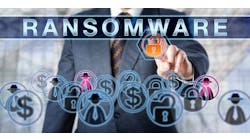With virtualization many data centers are finding it extremely easy to decrease the number of racks and hardware, while adding blade servers and increasing the supported applications. But storage and off site backups still remains an expensive solution.
There is a fear of sending data to a cloud or some environment that you can’t physically touch. Yet, in healthcare we have used application vendors to provide ASP solutions for years. These solutions are essentially…a cloud.
Here is why it’s been confusing:
Application Service Providers (ASP) is what we are generally familiar with. These are the traditional client/server healthcare application that you remotely access. They also hold your data. They have been popular because the vendor provides this with the added benefit of providing application updates, backups and typical data center services like night jobs.
Software as a Service (SAAS) is primarily a web app or a Service Oriented Architecture (SOA) which provides a service for a primary application. Some examples include: e-Prescribing, compliance tools, analytics, and mobile applications. They also process and hold your data. You either have a VPN tunnel or an FTP drop box that your data flows to/from.
Cloud or Cloud Computing is primarily hardware. You pay for the amount you need and it is primarily used for storage. You could host applications to it as well. Your only limitation is how much you want to pay for bandwidth to the cloud. When you host applications, you’re responsible for all the patches, updates, backups, and night jobs. Think of it as a data center (like the one in your building) that you remote into, but never set foot inside. Your cloud provider just takes care of the hardware.
So why haven’t we really taken advantage of Cloud based storage? I believe there is a HIPAA fear still out there which the term “Cloud” has created. It gives the impression that the data is going somewhere…up there in the mist. The truth is that it can be targeted and you can develop BAA’s with cloud services just like ASP’s.
What can we do with the cloud? Virtualized Machines (VM) have given us the ability to create multiple environments with each blade server. Most VM software comes with a replication tool or you can purchase your own. This gives you the ability to take full replicated snap shots of your environments and send them to a cloud. You can do the same with your Storage Area Network (SAN) and store it in the cloud. Now if something happens to one of your blade server racks or the SAN, you can swap out the hardware and restore the image. This solution may not fit the replication and DR strategy of many organizations, but it does fit nicely with others that may still be using tape. Yes, tape backups.
There is no need to fear the cloud. By educating your stakeholders you will be able to de-"mist"ify the cloud and provide a business solution that may be more in line with their financial targets.



